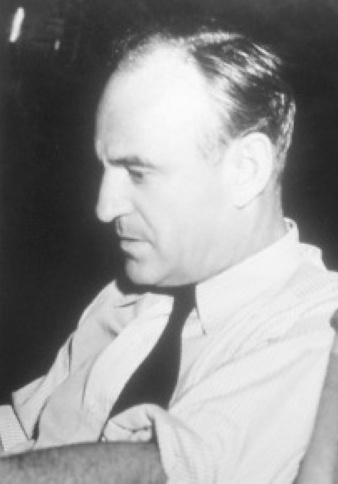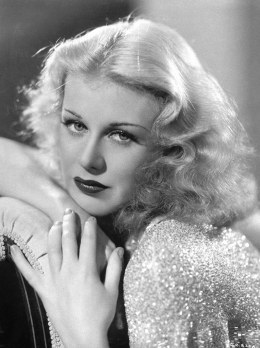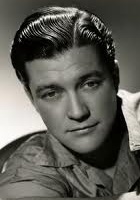女人万岁 Kitty Foyle(1940)

又名: Kitty Foyle: The Natural History of a Woman
导演: 山姆·伍德 Sam Wood
编剧: 克里斯托弗·莫利 达尔顿·特朗勃 唐纳德·奥格登·斯图尔特
主演: 金杰·罗杰斯 丹尼斯·摩根 詹姆斯·克雷格 James Craig 爱德华多·钱内利
制片国家/地区: 美国
上映日期: 1940-12-27(美国)
片长: 108 分钟 IMDb: tt0032671 豆瓣评分:6.8 下载地址:迅雷下载
简介:
- 凯蒂(金格尔·罗杰斯 Ginger Rogers 饰)是在政府部门工作的白领,秘书长温迪(丹尼斯·摩根 Dennis Morgan 饰)一直对凯蒂青睐有加,当他得知凯蒂的梦想是开一家杂志社后,他慷慨的倾囊相助,可惜的是,凯蒂的杂志社经营了没多久就倒闭了。之后,凯蒂只得灰头土脸的前往纽约,在那里寻找新的际遇。
演员:
影评:
- 提起金格尔·罗杰斯,大多数人立刻就会想到好莱坞黄金年代鼎盛一时的歌舞片。金格尔·罗杰斯是人们心中永远的好莱坞舞后,以至于这样太过于深入人心的形象,使人们忘记了其实罗杰斯不仅会跳舞,她还是一名出色的演员。1940年的电影《女人万岁》无疑是罗杰斯表演生涯里程碑式的作品。
《女人万岁》讲述的是关于女性选择的问题,罗杰斯在影片中所饰演的主人公凯蒂所面临的选择是:你究竟是选择一个你爱的人还是爱你的人。当然,凯蒂最后还是做出了正确的决定----抛开过去,与深爱自己的男人结婚。《女人万岁》算不上是一部优秀的作品,情节有些类似于电视中上演的肥皂剧。我个人印象最深的是影片开始的那段默片表演,很形象的表现了女性的解放与女权运动的高涨,在妇女没有获得权利时,在公交车上男人们会主动给她们让座。但当妇女享有与男人平等的权利之后,在公交车上再也没有人会给她们让座。这是很有趣的一个对比。不可否认,改变戏路的罗杰斯在影片中的表演确实给人耳目一新之感,也许这正是她能从琼·芳登(蝴蝶梦)、凯瑟琳·赫本(费城故事)、贝蒂·戴维斯(香笺泪)的手中获得奥斯卡的原因吧。
金格尔1911年7月16日生于蒙大拿州因德彭登斯。原名弗吉尼娅·卡特琳娜·迈克马思。她从小接受母亲的表演艺术熏陶,参加舞蹈和声乐学习;5 岁时参加商业广告的表演;6 岁到好莱坞,后又随在福斯影片公司当编剧的母亲赴纽约并得到了一份童星的演出合同。但她的母亲认为金格尔的条件尚未成熟,不宜拍片,所以一直到14 岁才第一次登上银幕,随一家舞蹈团参加一部影片的拍摄。第二年金格尔吉赢得一项查尔斯顿比赛大奖,由此开始在各歌舞团演出。与此同时,参加了几部短片的拍摄,其中包括与鲁迪·瓦利配戏的3 本长影片《校园甜心》。
1929 年,是金格尔的表演生涯的转折点,她被选中在百老汇歌舞剧《最高速度》中饰演二号女主角。罗杰斯第一次成名,是因为她的婚姻,当时年仅19岁的她和《纽约客》杂志著名编辑哈罗德·罗斯订婚,两人18岁的年龄差距成为当时文娱圈内的热门话题。1931 年,金格尔和百代公司签约来到好莱坞,立马凭借自己娇好的面容和歌舞方面的实力,成为歌舞片新星。她与弗雷德·阿斯泰尔配舞,主演了一些极为浪漫的歌舞片,二人的舞蹈高雅、优美,深受30 年代电影观众的赞誉,阿斯泰尔与罗杰斯的舞蹈搭档成为电影史上最有魅力的银幕形象之一。罗杰斯的成功是显而易见的,1938年,她的年薪就达到了21万美元,四年后,她理所当然得拿起了好莱坞的顶薪。
40 年代,罗杰斯除了多才多艺的舞蹈表演之外,还通过饰演各种角色显露出优秀的才华。相比利益上的创收,罗杰斯的名声来得稍微有些晚,1940 年因在《女人万岁》中的出色表演而获得第13届奥斯卡最佳女主角金像奖;在《游蜂浪蝶》(1941)和《群雏嬉凤》(1942)这样的通俗喜剧中,她也适度地显示出自己的实力。整个50 年代,她一直活跃于喜剧电影和正剧电影领域,所饰角色亦更加成熟,同时侧重点开始逐渐向舞台剧转移。1965 年在百老汇的歌舞剧《俏红娘》中担任主演,声威重振戏剧界。1969 年在伦敦上演的《妈咪》中她亦取得了极大成功。
1995年8月25日,罗杰斯去世后埋葬在奥克伍德公墓,此公墓也正是阿斯泰尔的坟茔所在地,他们生前曾经合作过数十部电影。 Other than being a sartorial trendsetter of its namesake Kitty Foyle dress, Sam Wood’s solid screen adaptation of Christopher Morley’s novel, penned by Mr. Trumbo, also confers its star Ginger Rogers a golden opportunity to strut her stuff, not her usual terpsichorean nimbleness, but her acting bent, and its reward is a hard-earned Oscar statuette, pipping strong contenders like Bette Davis in THE LETTER (1940, 8.0/10), Joan Fontaine in REBECCA (1940, 8.3/10) and Katharine Hepburn in THE PHILADELPHIA STORY (1940, 8.1/10).
After a prologue demonstrating the victory of gender equity in the beginning of twentieth century, here comes our heroine Kitty Foyle (Rogers), a New York saleswoman from Philadelphia, facing a difficult choice, there are two suitors awaiting her at midnight, one is doctor Mark Eisen (Craig) who loves her affectionately and another is her sweetheart Wyn Strafford (Morgan), whom she is enamored with, but a married man now who proposes that they can start anew in South America. When dithering about her decision, the film segues through a series of flashbacks (à la PENNY SERENADE 1941)with a snow globe as its mnemonic cue, detailing Kitty’s past entanglement with those two men, especially with Wyn, from their first meeting in Philly, their romance is congenially tainted by their social echelons, Wyn is from a prosperous banker’s family and she is merely his secretary, a rubberneck of the Assembly which Wyn attends annually. Acting in accordance with its woman-empowering tenet, the film vouchsafes Kitty a carte blanche by suggesting that Wyn is too meek and callow to make up his own mind. So Kitty leaves Philly when she knows a wedding proposal is too quixotic at that point, and in NYC, she is courted by Mark, who is the opposite of Wyn’s opulence, with a slightly prosaic air of practicality.
Life’s vagaries again bring Wyn to her, this time with a sincere marriage proposal and lavish pageantry to swoon her, they tie the knot, but reality check creeps in when Kitty has to face Wyn’s family and their unrelieved gentility, once more she braves herself to cut the Gordian knot. There are more hammer blows await her but as a paragon of modern woman with an absolutely righteous mind, Kitty proves herself a real hoop-jumper, and this time, she will make a right choice once and for all.
Ms. Rogers is most sympathetic when she brings forth Kitty's fortitude in the face of adversities, but the story’s emotional potency is detrimentally hampered by the white-washing of the hardship of being an independent woman surviving in a big city by all herself, Kitty is presented with an ineradicable veneer of silver screen allure which inexorablyrenders the tonality a shade condescending and contrived to any audience who chances upon it in the 21st century. Two supporting stars,Dennis Morgan and James Craig both make a great impression as an open-faced, suave gentleman without wiles, what differentiates them is where do they come from, not a bad marriage advice for today’s singletons although the film itself is as workmanlike as it is anodyne, a typical end product of Hollywood in thrall of production code,but not exactly a "natural" history of a woman.
referential points: Sam Wood’s THE DEVIL AND MISS JONES (1941, 7.2/10),George Steven’sPENNY SERENADE (1941, 7.0/10)




